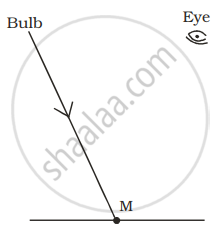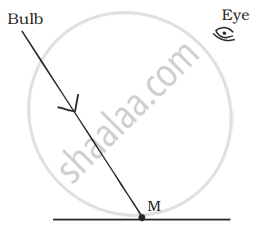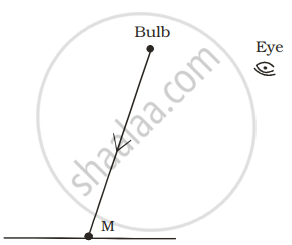Advertisements
Advertisements
प्रश्न
For the normal human eye, the near point is at ___________ cm.
विकल्प
10
20
25
30
उत्तर
For the normal human eye, the near point is at 25 cm.
APPEARS IN
संबंधित प्रश्न
Write the function of retina in human eye.
Write the function of the following part of the human eye:- iris
Write the function of the following part of the human eye: crystalline lens
Which. of the following has normal vision?
(a) Xc Xc
(b) Xc Y
(c) XC Xc
(d) Xc Yc
With the help of ciliary muscles the human eye can change its curvature and thus alter the focal length of its lens. State the changes that occur in the curvature and focal length of the eye lens while viewing (a) a distance object, (b) nearby objects.
Name two parts of the eye which refract light rays (or bend light rays).
What is the name of:
the light-sensitive layer in the eye?
State whether the following statement is true or false:
The image formed on our retina is upside-down
Give the scientific names of the following parts of the eye:
a hole in the middle of the iris.
Give the scientific names of the following parts of the eye:
a clear window at the front of the eye.
Fill in the following blank with suitable words:
When light is dim, the pupil becomes................
What changes take place in the shape of eye-lens:
when the eye is focused on a distant object?
How is the amount of light entering the eye controlled?
Describe and explain, how a normal eye can see objects lying at various distances clearly.
There are two types of light-sensitive cells in the human eye:
To what is each type of cell sensitive?
An object is moved closer to an eye. What changes must take place in the eye in order to keep the image in sharp focus?
Nocturnal animals (animals which sleep during the day and come out at night) tend to have wide pupils and lot of rods in their retinas. Suggest reasons for this.
Five persons A, B, C, D and E have diabetes, leukaemia, asthma, meningitis and hepatitis, respectively.
Which of these persons cannot donate eyes?
The animals called predators have:
(a) both the eyes on the sides
(b) one eye on the side and one at the front
(c) one eye on the front and one at the back
(d) both the eyes at the front
State the function of each of the following parts of the human eye:
(i) Cornea
(ii) Iris
(iii) Pupil
(iv) Retina
Millions of people of the developing countries are suffering from corneal blindness. This disease can be cured by replacing the defective cornea with the cornea of a donated eye. Your school has organised a campaign in the school and its neighbourhood in order to create awareness about this fact and motivate people to donate their eyes after death. How can you along with your classmates contribute in this noble cause? State the objectives of organising such campaigns in schools.
State the main functions of the following:
Coronary Artery
State the main functions of the following:
Seminal Vesicles
Define the following:
Blind spot
Define the following:
Power of accommodation
Choose the correct answer.
Which one is the photoreceptor _____________
Differentiate between:
Vitreous humour and Aqueous humour.
Name the following:
The pigmented circular area seen in the eye.
Name the following:
The type of lens used for correcting myopia.
Give Technical Term:
The fluid which conveys the vibrations of sound in the cochlea and semicircular canals.
Mention, if the following statement is True or False
Cones are the receptor cells in the retina of the eye sensitive to dim light.
State the Function:
Conjunctiva
State the Function:
Vitreous humour
Write the name.
The part of human eye that transmits electrical signals to the brain.
For a healthy human eye, the distant point is infinite distance.
A tiny mirror M is fixed on a piece of cardboard placed on a table. The cardboard is illuminated by light from a bulb. The position of eye with respect to position of bulb is shown in the figure as A, B, C and D. In which position mirror will be visible?
 |
 |
 |
 |
| (A) | (B) | (C) | (D) |
Name the part of the eye which gives colour to the eyes.
Which part of the eye gets affected if someone is suffering from cataract? How is it treated?
Describe the parts in the external structure of the eye.
The change in the focal length of an eye lens in human beings is caused by the action of ______.
With reference to human eye answer the question that follow:
Name the part of the eye associated with the regulation of the shape of lens.
